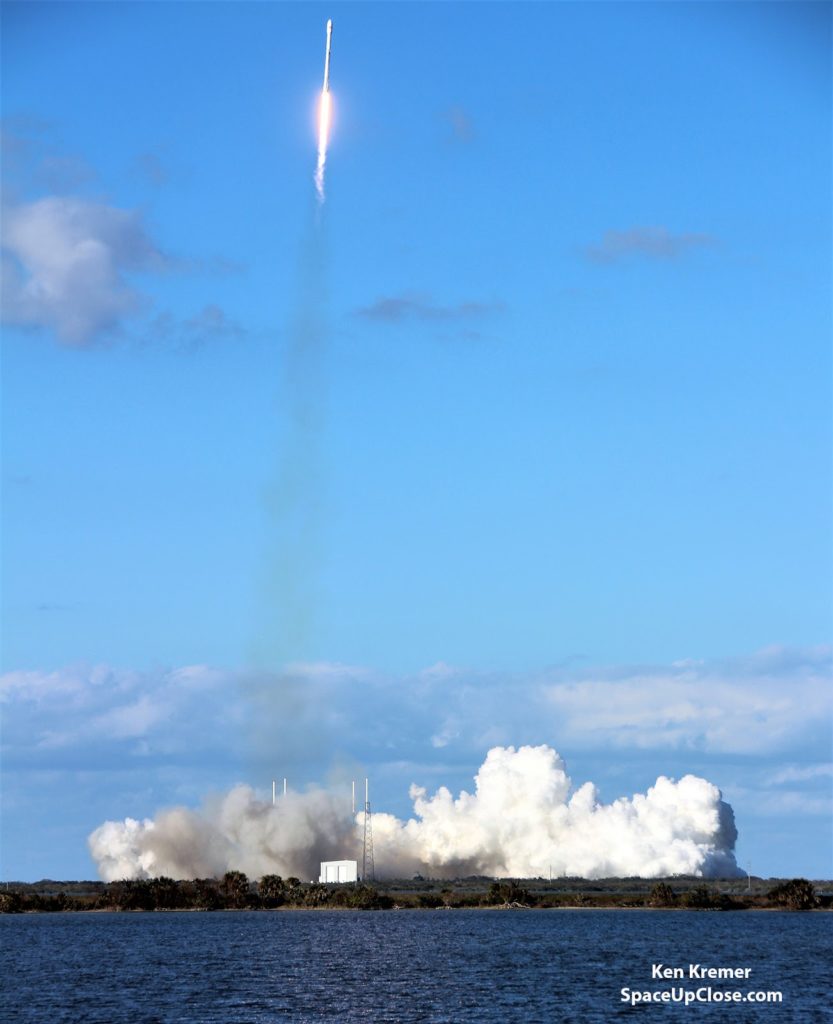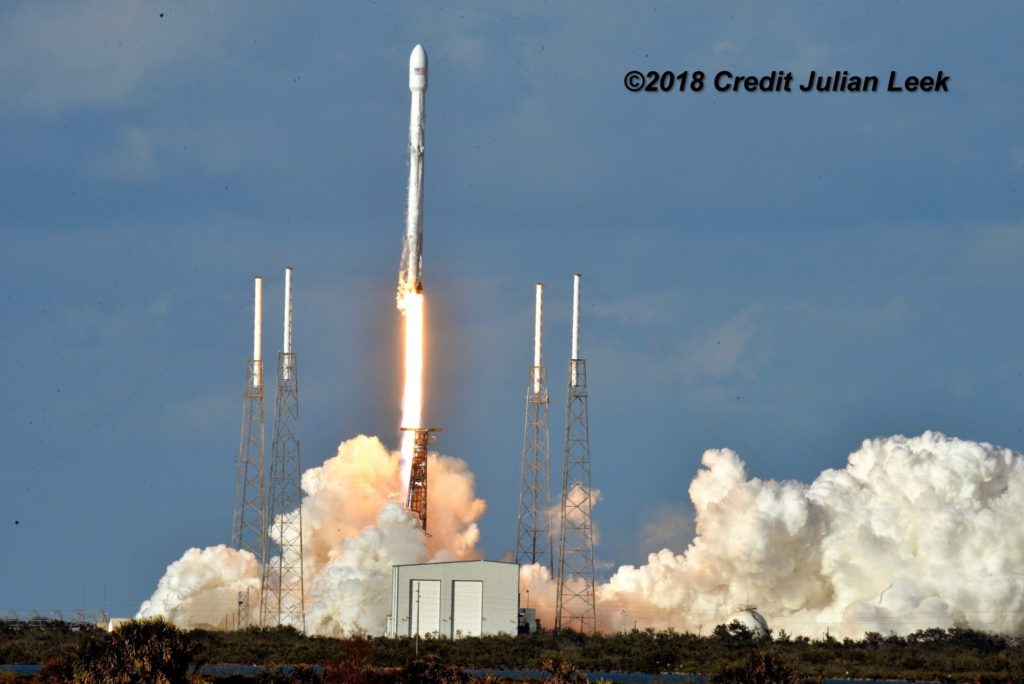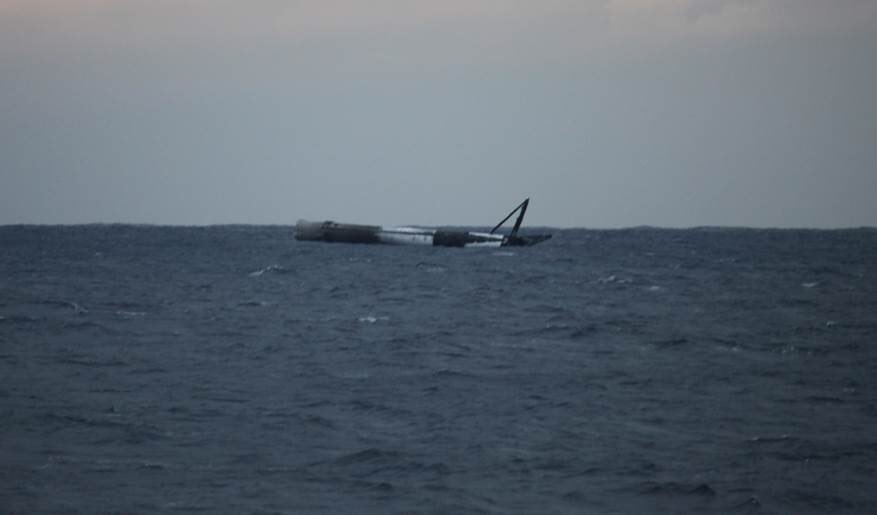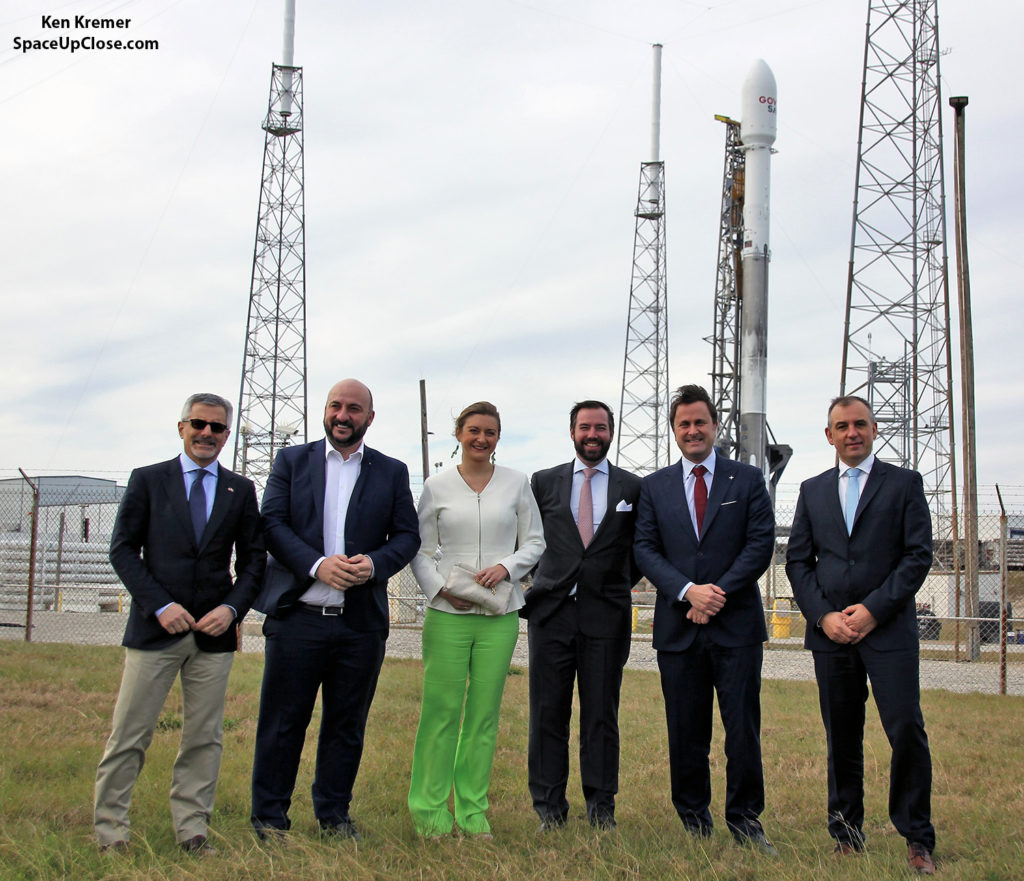 |
||||||||
|
SpaceX Falcon 9 rocket carrying GovSat-1/SES-16
lifts off at 4:25 p.m. EST from Space Launch Complex 40 (SLC-40) on Cape Canaveral Air Force Station, Florida to geostationary transfer orbit on Jan. 31, 2018. Credit: Ken Kremer/SpaceUpClose.com/www.kenkremer.com
Ken Kremer — SpaceUpClose.com — 1 Feb
2018
CAPE CANAVERAL AIR FORCE STATION,
FL – The GovSat-1 telecommunications satellite streaked to orbit Jan. 31 after a stunningly beautiful blastoff on a reflown SpaceX Falcon 9 rocket at 4:25 p.m. EST (2125 GMT) from seaside Space Launch Complex-40 (SLC-40) on Cape Canaveral Air Force Station under nearly picture-perfect conditions.
GovSat-1 is the first satellite of GovSat, a 50:50 public private partnership
between the Government of Luxembourg and SES, one of the world’s top satellite operator. Overall GovSat-1 is also
“The launch went
perfectly and the satellite is healthy,” SES Chief Technology Officer Martin Halliwell told Space UpClose in an exclusive one-on-one post launch interview.
“GovSat 1 was
delivered to its initial supersynchronous transfer orbit as planned.”
GovSat-1 is
primarily designed for institutional use by the government of Luxembourg and aimed at fulfilling the country’s NATO commitments, Halliwell explained.
Read my full
interview with Halliwell upcoming here soon.
In the meantime, check out our extensive Space UpClose gallery
of photos and videos captured from a variety of vantage points ringing the pad on the Florida Space Coast as the rocket speeds to orbit – by myself and space colleagues Jeff Seibert and Julian Leek.
And check back again later as the gallery grows!
The two stage 229-foot-tall (70-meter-tall) SpaceX Falcon 9
rocket launched the 4.7 ton GovSat-1 satellite right on time at the opening of the launch window.
The 9 first stage nine roaring Merlin 1 D
engines produced 1.7 million pounds of liftoff thrust.
Watch this GovSat-1
launch video compilation from space colleague Jeff Seibert:
Video
Caption: SpaceX Launches GovSat-1 on Jan. 31, 2018/ REMOTE CAMERA VIEWS. Credit: Jeff Seibert
The multi-mission
satellite was manufactured by prime contractor Orbital ATK. It has a design lifetime of 15 years of operation in geostationary orbit. The spacecraft has a launch mass of 4,230 kg (9326 lb).
GovSat-1 will be located
at the 21.5 degrees East orbital slot.
It will serve Europe,
the Middle East and Africa, including substantial maritime coverage over the Mediterranean and Baltic seas, and the Atlantic and Indian Oceans for NATO operations.
Wednesdays’ launch successfully
completed a trifecta of liftoffs from the Cape in January including another SpaceX Falcon 9 carrying the mysterious and classified Zuma spy satellite for the US government – whos fate remains unknown- and a ULA Atlas V carrying the SBIRS GEO Flight 4 satellite for the USAF. Read our earlier stories here.
The recycled first stage for the GovSat-1 mission was previously
used to launch the NROL-76 spy satellite on a classified mission for the National Reconnaissance Office (NRO) from LC-39A in May 2017.
Although SpaceX
did not plan to again recover the booster it did conduct an experimental soft water landing test under modified conditions relighting 3 engines instead of one, but without a droneship to land on and expand the envelope of operation and operability.
In the end the booster survived by tipping over and
floating in the ocean.
“This
rocket was meant to test very high retrothrust landing in water so it didn’t hurt the droneship, but amazingly it has survived. We will try to tow it back to shore,” Musk explained.
|

















